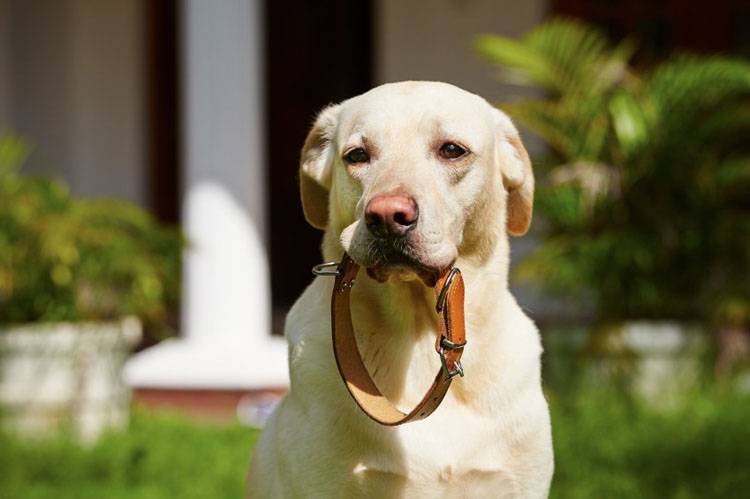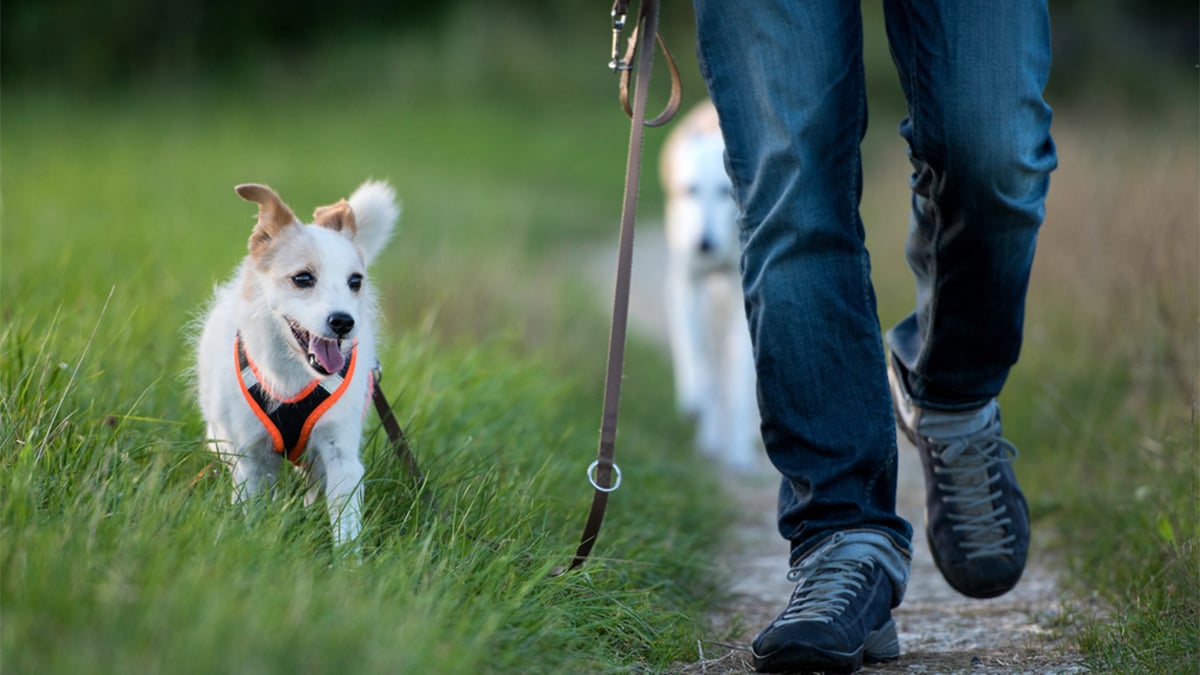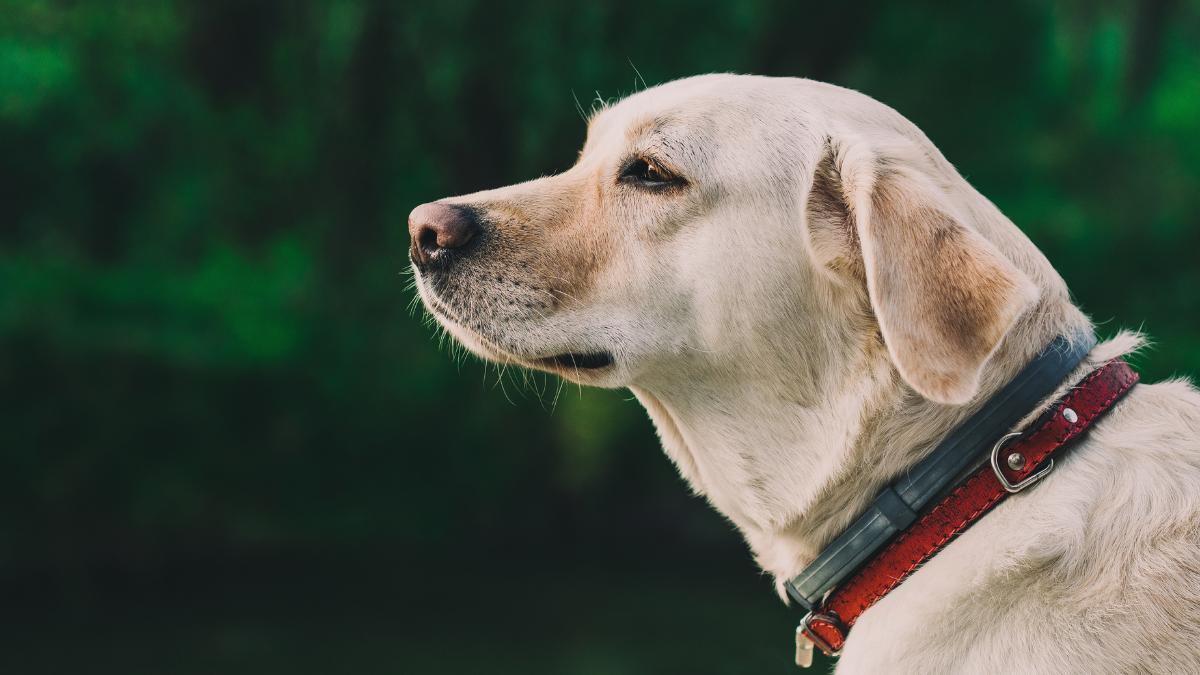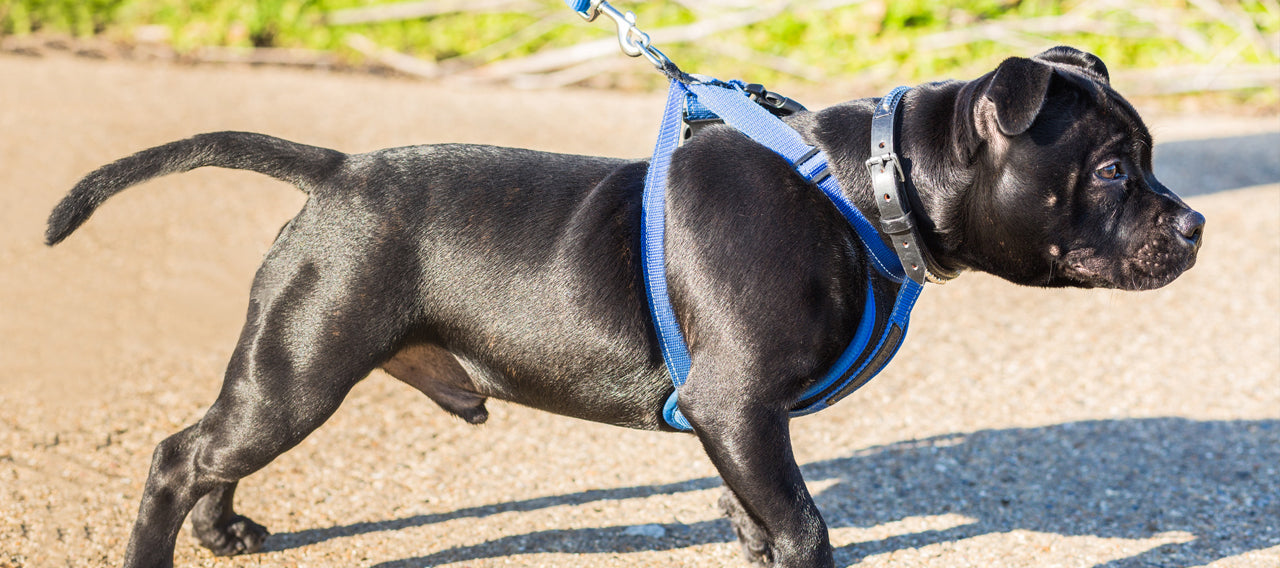Collar choice is crucial for ensuring your dog’s comfort and safety during walks. As you commence on outdoor adventures with your furry friend, selecting the right leash and collar not only enhances your walking experience but also promotes your dog’s health and well-being. In this guide, you’ll discover necessary tips on how to choose the perfect leash and collar to suit your dog’s unique needs, ensuring that every walk is enjoyable and hassle-free.
Key Takeaways:
- Leash Length: Choose a leash that provides enough length for your dog to explore while still giving you control.
- Collar Fit: Ensure the collar is the right size; it should be snug but allow for two fingers to fit comfortably underneath.
- Material Matters: Consider the material of both the leash and collar, opting for durable options that suit your dog’s activity level and environment.
Understanding Your Dog’s Needs
The health and happiness of your dog largely depend on understanding their unique needs when it comes to walking. Choosing the right leash and collar goes beyond mere functionality; it’s about ensuring your furry friend feels secure and comfortable during walks. This understanding can lead to a more enjoyable experience for both of you and can prevent potential issues down the line.

Identifying Breed-Specific Requirements
Little dogs, for example, may require lighter leashes and collars that won’t overwhelm their small frames. Breeds such as Dachshunds or Chihuahuas often benefit from harnesses that distribute pressure more evenly across their bodies, reducing strain on their necks. On the other hand, larger breeds like Great Danes or Labrador Retrievers require sturdier equipment that can handle their strength and size, helping to ensure safety and comfort during walks.
Considering Age, Size, and Health Conditions
Size plays an necessary role in determining the right leash and collar for your dog. Puppies often need collars that can grow with them, while older dogs may require different considerations based on joint health or the presence of any mobility issues. Similarly, a large leash can feel bulky on a small dog, while a lightweight option may be insufficient for securing a larger breed. Taking your dog’s age and health into account will also guide you in making the right choices.
Considering all these factors, it’s vital to evaluate any specific health conditions your dog might face, such as arthritis or respiratory issues. For example, a dog with orthopedic problems might benefit from a padded harness that alleviates pressure on sensitive areas. On the flip side, a dog prone to tracheal collapse, like a toy breed, would do better with a harness rather than a collar that could exert pressure on the neck. By taking these considerations into account, you ensure that your dog’s walking necessarys align with their health and well-being.
Factors to Consider When Choosing a Leash
If you’re looking to enhance your dog walking experience, choosing the right leash is a critical factor. The right leash not only provides control and security, but it also contributes to your dog’s overall health and well-being. Here are several important factors to keep in mind:
- Material and Durability
- Length and Adjustable Options
- Handle Type and Comfort
- Weight Considerations
- Weather Resistance
Any of these factors can significantly impact how effective and enjoyable your walks will be.
Material and Durability
Now, let’s discuss material and durability. The material of your leash is crucial for ensuring its strength and longevity. Common materials include nylon, leather, and cotton, each with its own advantages and disadvantages. For example, nylon leashes are lightweight and often resistant to wear, while leather offers a classic look and can provide superior comfort in the hand. However, leather may require more maintenance and can weaken over time if exposed to moisture.

Additionally, consider the durability of the attachments and hardware on the leash, such as clasps and rings. A well-made leash with strong hardware is crucial for keeping your dog secure during your walks, especially if your dog is a puller or a strong breed. This focus on quality will pay off in the long run by preventing accidents related to leash failure.
Length and Adjustable Options
Some dog owners prefer different leash lengths depending on their walking style and the behavior of their pet. A standard leash is usually around six feet long, which provides enough control while still allowing your dog some freedom to explore. However, there are also options for shorter leashes that offer more control in busy or crowded areas, as well as longer leashes for more adventurous hikes or runs. An adjustable leash allows you to customize the length based on your needs, offering versatility and convenience.
Choosing the right length is also vital for your dog’s health. A shorter leash gives you better control and helps you discourage unhealthy pulling or lunging behaviors. Conversely, a longer leash can provide your pet with the opportunity to enjoy more freedom and exercise, which is crucial for their physical well-being. When looking for adjustable options, check the mechanism to ensure it operates smoothly and securely so that you can quickly change lengths as needed during your walks.
Handle Type and Comfort
Even the handle of the leash plays a crucial role in your overall walking experience. Different handle designs offer varying levels of comfort and control, particularly during longer outings. Some handles are padded for added comfort, which can be particularly beneficial if you have a strong dog that tends to pull. Other leashes may feature ergonomic designs that reduce strain on your hand and wrist, making your walks more enjoyable.

Factors that contribute to choosing the right handle include the length of the handle, the material used, and whether it has any additional features, such as a built-in traffic handle for better control in crowded spaces. Finding a comfortable handle will make your daily walks much more pleasant, reducing the risk of hand fatigue and allowing you to focus on enjoying time with your furry friend.
How to Select the Right Collar for Your Dog
For dog owners, the collar is more than just a fashion accessory; it plays a vital role in your dog’s health and safety. Choosing the right collar can ensure your pet is comfortable, secure, and ready for any adventure. From proper measurements to suitable types, let’s probe how to select the perfect collar for your beloved canine companion.
Measuring for a Proper Fit
Some dog owners overlook the importance of a properly fitted collar, which can lead to discomfort or even injury. To measure your dog for the right size, use a flexible measuring tape or a piece of string to gauge around the neck, just below the Adam’s apple. Make sure to leave about one or two fingers’ worth of space to ensure it’s snug but not too tight. You can then compare this measurement against the sizing chart of the collar you’re considering to find the best fit.
Some collars come with adjustable features, which can offer added flexibility in fit. However, it’s always best to try on the collar and see how your dog reacts to it. Watch for any signs of discomfort, such as excessive scratching or attempts to remove the collar, which can indicate it’s not fitting correctly.
Choosing the Right Collar Type (Buckle, Martingale, etc.)
Measuring the right fit is imperative, but equally important is understanding the different types of collars available. Buckle collars are among the most common and are simple to use, while martingale collars offer more control without choking your dog. There are also flat collars, which are great for everyday use, and harness-style collars, which can be ideal for more energetic pets that pull excessively while walking.
Another option you might consider is a snap collar, which is easy to secure and release, making it convenient for quick outings. It’s imperative to evaluate your dog’s behavior, such as whether they tend to pull on walks or have a history of slipping out of their collars, to select the right type that suits their needs best.
Considering Additional Features (ID Tags, Reflective Materials, etc.)
Reflective materials can make a significant difference in keeping your dog safe, especially during early morning or late evening walks. Look for collars that incorporate reflective stitching or tags so that your pet is easily seen by passing vehicles or cyclists. This can provide added peace of mind, knowing that your furry friend is more visible in low-light conditions.
For instance, consider investing in a collar that features an integrated ID tag holder, which makes it easy to attach your dog’s identification without needing extra clips or accessories. Having an ID tag with up-to-date information is crucial for locating your dog should they ever get lost. These additional features contribute to your dog’s overall safety and well-being, making them an imperative part of your collar selection process.
Tips for Picking a Leash and Collar Combination
Once again, choosing the right leash and collar combination for your dog is important for both their comfort and safety. When navigating the myriad of options available, consider these straightforward tips that can guide your selection process:
- Assess your dog’s size and breed to determine the appropriate materials and dimensions for their leash and collar.
- Evaluate your walking habits to align the leash length with your walking style and environment.
- Think about your dog’s behavior; a more energetic and excitable dog may require a sturdier leash and collar combination.
- Ensure your collar fits well—snug enough to prevent slipping off, but loose enough to fit a couple of fingers beneath it.
- Look for specialized features that cater to your dog’s specific needs, such as reflective materials or quick-release buckles.
Assume that with careful consideration of these tips, you will find the perfect leash and collar combination that promotes your dog’s health and enhances your walking experience.
Balancing Comfort and Control
Picking the right balance between comfort and control is vital when selecting leash and collar combinations. Look for collars that are made from soft, breathable materials that won’t dig into your dog’s skin or irritate their coat. A head collar or harness can provide added comfort while also giving you better control over your dog, especially if they tend to pull during walks. Remember that a relaxed dog is more likely to enjoy walks, making it important to create a positive association with these walking importants.
While control is paramount, it shouldn’t come at the cost of comfort. Ensure the leash is durable yet lightweight enough for your dog to feel free while walking. Consider adjustable options that allow you to modify the length based on your surroundings. By focusing on both comfort and control, you set the stage for enjoyable and safe walks with your furry friend.
Considering Your Dog’s Walking Style
Any dog exhibits unique walking styles that influence their leash and collar needs. For instance, if your dog walks calmly by your side, a standard leash and collar may suffice. However, if your pooch is the adventurous type, often darting with excitement, you might need to opt for a harness that reduces the risk of injury while maintaining your grip on them. Consider how your dog behaves around distractions, such as other animals or people, which can inform your choice of leash, whether it be retractable or standard.

This assessment of walking style should also include whether your dog tends to pull or is more relaxed during walks. If your dog tends to pull, a no-pull harness can provide better control while preventing discomfort. On the other hand, a more subdued dog may benefit from a lighter leash that gives them space to explore comfortably without the risk of feeling restrained. Taking the time to understand your dog’s unique walking style ultimately leads to a better experience for both of you.
Prioritizing Safety Features
Features like reflective stitching, padded handles, and durable materials should be a part of your consideration when picking a leash and collar combination. These elements not only enhance safety during your walks but also increase the longevity of the gear. Especially if you walk your dog during dusk or night, reflective materials can ensure you’re both visible to motorists, significantly reducing the risk of accidents. A padded handle can alleviate hand strain, promoting a safer and more comfortable grip, especially during longer outings.
Plus, some leashes come with built-in traffic handles for close control in busy areas. These added features can be lifesavers, providing you with added peace of mind as you navigate crowded parks or city streets. Prioritizing safety features ensures that you and your dog are prepared for any situation, leading to more enjoyable and stress-free walks together.
Common Mistakes to Avoid
Your choice of leash and collar is crucial to your dog’s health and overall walking experience, but it’s easy to make common mistakes. Awareness of these pitfalls will help you ensure that your canine companion is comfortable and safe on walks. Making the right selections will not only enhance your bonding time but also provide the necessary support for your dog’s physical well-being.
Choosing a Leash That’s Too Long or Too Short
Some dog owners may underestimate the importance of leash length when choosing the right walking gear. A leash that is too long can lead to a lack of control, allowing your dog to wander too far away, potentially exposing them to dangers like traffic or other aggressive animals. On the other hand, a leash that is too short may restrict your dog’s movement and lead to discomfort, preventing them from exploring their surroundings fully.
Some dogs require a specific leash length based on their size and energy levels. For more energetic breeds, a medium to short leash may provide better control, while a longer leash could be appropriate for calmer dogs that appreciate a little more space. Always opt for a length that suits both your dog’s needs and your walking environment.
Selecting a Collar That’s Too Tight or Too Loose
Some owners often overlook the significance of finding a collar that fits properly. A collar that is too tight can cause respiratory issues and discomfort, while a collar that is too loose runs the risk of slipping off, which could lead to your dog running away or getting lost. It’s important to ensure that you can comfortably fit two fingers between the collar and your dog’s neck.
Some dogs have unique neck shapes, so it’s prudent to take their measurements for an accurate fit. Regularly check the collar’s fit, as your dog may gain or lose weight, or their coat may change with the seasons, necessitating adjustments to their collar size for comfort and safety.
To maintain your dog’s health and comfort, it’s vital to check their collar frequently, ensuring it fits well. Keep in mind that collars need to be adjusted from time to time, especially if your dog is still growing or has recently lost or gained weight. A well-fitting collar not only ensures the safety of your pet but also prevents any unnecessary discomfort that could lead to behavioral issues.
Overlooking Important Safety Features
Some pet owners may forget to consider safety features when choosing a leash and collar. Elements like reflective materials, quick-release buckles, and breakaway collars can significantly enhance your dog’s safety during walks, especially in low-light situations. Neglecting these features can expose your dog to various risks that could be easily mitigated with a few thoughtful choices.
Some dog owners may be tempted to purchase aesthetically pleasing gear without considering functional details. Remember that a collar and leash are not just accessories; they play a crucial role in your dog’s safety and comfort. By prioritizing safety alongside style, you can create a harmonious walking experience for both you and your dog.
Long-term safety should always be a priority when selecting a leash and collar. Always look for high-quality materials that can withstand wear and tear. Opt for designs that account for potential hazards, such as escaping during walks or unexpected encounters with unfamiliar animals. Keeping safety in mind will not only protect your dog but also provide you peace of mind as you enjoy your walks together.
Advanced Leash and Collar Options
Many dog owners seek to enhance their walking experience with advanced leash and collar options designed not only for functionality but also for the well-being and safety of their furry companions. As you explore the variety of advanced choices available, consider the specific needs and behaviors of your dog. Here, we will break down some innovative options that may suit your lifestyle and your dog’s health.
| Leash Options | Collar Options |
|---|---|
| Retractable Leashes | Martingale Collars |
| Hands-Free Leashes | GPS Collars |
| Dual Leashes | LED Collars |
| Training Leashes | Custom Collars |
Exploring Specialty Leashes (Retractable, Hands-Free, etc.)
Leashes come in various forms that cater to specific needs and activities. Retractable leashes offer the freedom for your dog to roam while still allowing you control. This feature can be particularly beneficial for dogs who like to explore, as it combines a long distance with the reassurance of immediate retraction. On the other hand, hands-free leashes are perfect for active owners who enjoy jogging, hiking, or cycling with their pets. These leashes often attach to your waist, keeping your hands free and promoting a better bond between you and your dog during your adventurous outings.
Additionally, dual leashes can support walking multiple dogs at once, simplifying your routine if you own more than one pet. Training leashes give you more control and support during training sessions, helping to instill good behavior while allowing your dog some freedom without causing you stress. Each of these options serves a purpose, and considering your specific needs can significantly improve your walking experiences.
Considering Custom or Bespoke Collars
Clearly, the right collar should fit both your style and your dog’s personality. Custom or bespoke collars allow for personalization that can showcase your dog’s unique characteristics. When dicking out a custom collar, think about materials, colors, and any additional functionalities that may be imperative for your dog’s specific needs. For example, if your dog is prone to allergies, look for collars made from hypoallergenic materials to ensure comfort while walking.
A well-fitted bespoke collar can also include features like added reflectivity for nighttime visibility, or even personalized engraving to help identify your dog in case they get lost. As you consider a custom collar, prioritize durability and comfort, ensuring the collar can withstand daily wear and tear and provide a secure fit without causing irritation to your dog’s neck.
Integrating Technology into Your Leash and Collar
There’s a growing trend towards integrating technology into your leash and collar setups. Smart collars equipped with GPS tracking can provide imperative information regarding your dog’s location, which adds peace of mind when they are off-leash or during outdoor activities. These collars can often track fitness metrics such as activity levels, helping you monitor your dog’s health and ensure adequate exercise, which is crucial for maintaining a happy, healthy pet.

Moreover, some leashes and collars now come with features like light-up options for evening walks, making it easier to stay visible to others. These innovations not only enhance safety but also contribute to your overall experience as a dog owner, streamlining activities, and promoting better health for both you and your furry friend.
Collars that integrate technology are becoming increasingly sophisticated. Consider options that allow you to sync with your smartphone, providing real-time feedback about your dog’s activity levels. Such advancements underscore the importance of keeping pace with evolving products, ensuring you choose the best gear that supports your dog’s health while considering your lifestyle.
Final Words
Presently, choosing the right leash and collar for your dog is crucial for not only their comfort and security but also their overall health. By taking the time to evaluate your lifestyle, your dog’s size, and their temperament, you can select equipment that enhances your walking experience and promotes your furry friend’s wellbeing. Be sure to consider factors such as material, adjustability, and additional features like reflective elements or padded collars to ensure maximum safety during your outings. Bear in mind, the right gear can make a world of difference in how enjoyable and productive your walks can be.
As you initiate on this important decision, keep in mind that your dog’s health is paramount. Investing in high-quality walking imperatives not only protects them from possible injuries but also encourages regular physical activity, which is vital for their happiness and vitality. You want to foster a healthy bond with your four-legged companion, and the right leash and collar can significantly contribute to that connection. So equip yourself with the knowledge necessary to make the best choice for your beloved pet, ensuring both of you can enjoy countless pleasant walks together.
FAQ
Q: What factors should I consider when choosing a collar for my dog?
A: When selecting a collar for your dog, consider the following factors:
1. **Size and Fit**: Ensure the collar fits your dog’s neck comfortably without being too tight or too loose. Measure their neck size and choose a collar that allows for two fingers to fit between the collar and their neck.
2. **Material**: Opt for a collar made of durable and comfortable material. Choices range from nylon and leather to padded collars that provide extra comfort, especially for long-haired dogs or those with sensitive skin.
3. **Purpose**: Identify the collar’s purpose—whether it’s for everyday wear, training, or identification. For example, a collar with a quick-release buckle is ideal for safety, while a martingale collar may be better for training purposes.
Q: How do I choose the right leash for my dog?
A: Selecting the right leash requires consideration of several important aspects:
1. **Leash Length**: Longer leashes (6-10 feet) are great for giving your dog more freedom, while shorter leashes (4-6 feet) provide better control in crowded or high-distraction areas.
2. **Material and Sturdiness**: Choose a leash made from sturdy materials like nylon or leather that can withstand pulling. A reflective leash can enhance visibility during evening walks.
3. **Type of Leash**: Decide between standard leashes, retractable leashes, or specialty training leashes. Each type serves a different purpose; for example, standard leashes provide more control for training, while retractable leashes allow for freedom but need careful handling.
Q: How can improper collar and leash choices affect my dog’s health?
A: Using unsuitable collars and leashes can lead to several health issues for your dog:
1. **Neck Injuries**: Collars that are too tight can cause choking or restrict blood flow, while collars that are too loose may slip off and not provide sufficient control. Choose collars that distribute pressure evenly to prevent injury.
2. **Behavioral Issues**: A leash that is too long may lead to increased distractions and unwanted behaviors, while overly short leashes can create stress and anxiety. A proper length helps in training and contributes to a calm walking experience.
3. **Skin Irritation**: Collars made from rough materials or those with metal components can irritate your dog’s skin and lead to infections. Always check for any signs of discomfort or rash, and consult with a veterinarian if any such issues arise.










